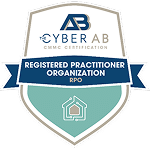Cybersecurity Awareness Month highlights the critical need for small and medium-sized businesses (SMBs) to enhance their cybersecurity strategies in response to rising threats. With many SMBs experiencing attacks, adopting strategies like the Zero Trust model and strengthening supply chain security is essential for risk mitigation and resilience.
October marks Cybersecurity Awareness Month, a vital opportunity for businesses to strengthen their cybersecurity strategies. The statistics are alarming: in 2023, 41% of small and medium-sized businesses (SMBs) experienced cyberattacks, up from 38% in 2022. The consequences are severe, with 60% of affected SMBs forced to shut down within six months due to financial losses and reputational damage.
SMBs are attractive targets for cybercriminals. They often lack the advanced security measures larger organizations employ, such as robust firewalls and dedicated security teams. As threats grow more sophisticated—ranging from ransomware-as-a-service to highly targeted phishing scams—a reactive cybersecurity approach is no longer sufficient to protect sensitive data and operations.
Thus, during Cybersecurity Awareness Month, SMBs must address emerging threats proactively. To help secure essential business functions and minimize the risks associated with cyberattacks, we’ve compiled the top 10 cybersecurity tips and trends you need to know.
1. Adopt a Zero Trust Security Model
Trend: The Zero Trust Security Model is increasingly considered the gold standard in cybersecurity, particularly as traditional defenses falter against advanced threats. This model mandates verification for every user, device, or system, regardless of location. Consequently, in 2024, more organizations will adopt Zero Trust due to the rise of remote work, cloud adoption, and the proliferation of IoT devices.
Tip: Implement Zero Trust by integrating Identity and Access Management (IAM) with Multi-Factor Authentication (MFA) and software-defined perimeters (SDP) for secure access. Additionally, network segmentation should be utilized to limit lateral movement, and continuous authentication and behavioral biometrics should be employed to monitor users in real-time. Micro-segmentation in cloud and data center environments further safeguards sensitive resources.
2. Strengthen Crimeware Defense Strategies
Trend: Crimeware, especially ransomware, has evolved significantly. Attackers now utilize Ransomware-as-a-Service (RaaS), making cybercrime more accessible. Moreover, double extortion tactics—where data is stolen before encryption—have intensified the severity of these threats. As AI and automation enhance these attacks, detection and response strategies must evolve.
Tip: Strengthen defenses with advanced endpoint detection and response (EDR) solutions that leverage machine learning to block ransomware. Employ immutable backups with cloud and offline storage for redundancy and use network segmentation and endpoint isolation to contain infections. Automate your incident response plan using Security Orchestration, Automation, and Response (SOAR) platforms for swift threat identification and remediation.
3. Enhance Supply Chain Security and Third-Party Risk Management
Trend: The interconnectedness of global supply chains has increased the risk of supply chain attacks, where cybercriminals exploit vulnerabilities in third-party vendors. Recent breaches, such as SolarWinds and Kaseya, demonstrate the dangers of compromised software updates.
Tip: Strengthen your third-party risk management (TPRM) program by incorporating automated vendor monitoring and ongoing vulnerability scans. Set security requirements in contracts to comply with standards like NIST 800-161 or ISO / IEC and require regular audits. Implement secure code reviews and utilize software composition analysis (SCA) tools to identify vulnerable open-source components.
4. Improve Cyber Resilience with Incident Response Plans
Trend: Organizations are increasingly focusing on cyber resilience, which entails maintaining essential operations and recovering quickly after a cyberattack. As threats become more frequent and complex—particularly advanced persistent threats (APTs)—preparation is critical for defending against attacks and ensuring business continuity.
Tip: Develop an incident response (IR) framework based on standards like NIST 800-61 or the SANS Incident Response Framework. Your IR plan should define role-based responsibilities and include playbooks for specific attack types (e.g., ransomware and data breaches). Incorporate digital forensics capabilities to identify root causes and assess damage. Regularly conduct tabletop exercises and red team / blue team simulations to test the response team’s readiness. Leverage Security Information and Event Management (SIEM) and Extended Detection and Response (XDR) platforms for real-time visibility and automated incident handling.
5. Focus on Data Privacy and Compliance Requirements
Trend: Organizations face increasing pressure to comply with global data privacy regulations such as GDPR, CCPA, and China’s PIPL. Regulatory bodies ramp up enforcement, and violations can result in significant penalties.
Tip: Embed privacy by design into systems handling sensitive data. Use data classification tools, encrypt data at rest and in transit, and implement TLS 1.3 for secure communication. Monitor data movement with data loss prevention (DLP) technologies and regularly conduct privacy impact assessments (PIAs) and data protection impact assessments (DPIAs) to ensure compliance.
6. Invest in Cybersecurity Awareness Training and Upskilling Initiatives
Trend: The cybersecurity talent gap is widening as demand outstrips supply, leaving organizations struggling to fill critical roles. As a result, cyberattacks are becoming more sophisticated, with employees often targeted due to social engineering and poor security practices.
Tip: Provide continuous training for staff in cloud security, AI-based threat detection, and Zero Trust architecture. Adopt certification frameworks like CISSP, CEH, and CISM. Explore apprenticeship programs and partnerships with academic institutions to cultivate talent. Consider engaging Managed Security Service Providers (MSSPs) or Security Operations Centers as a Service (SOCaaS) for expert 24/7 monitoring. Regularly train employees on threats, including social engineering and ransomware, to keep them informed and vigilant.
7. Invest in Robust Identity and Access Management (IAM)
Trend: As remote work and cloud adoption increase, securing user identities and access to critical resources is paramount. Threats such as credential stuffing, privilege escalation, and account takeover often exploit weak IAM controls.
Tip: Create an effective IAM strategy by integrating Multi-Factor Authentication (MFA) and Single Sign-On (SSO) to reduce password reliance. Utilize Privileged Access Management (PAM) to monitor administrative access and implement Just-In-Time (JIT) access to limit exposure. Employ role-based access control (RBAC) and attribute-based access control (ABAC) for granular access policies based on user roles and behaviors.
8. Prioritize Secure Software Development Practices
Trend: Secure software practices are crucial as organizations rapidly develop applications. This shift has focused on DevSecOps, which integrates security throughout the software development lifecycle (SDLC).
Tip: Adopt a DevSecOps approach by incorporating security testing throughout development using Static Application Security Testing (SAST) and Dynamic Application Security Testing (DAST). Provide developers with regular security training on common vulnerabilities, such as those listed in the OWASP Top Ten. Implement secure coding guidelines and conduct regular code reviews to identify and address vulnerabilities early.
9. Leverage Threat Intelligence Capabilities
Trend: The rise in cyber threats is prompting organizations to utilize threat intelligence to understand emerging risks and attacker tactics. Automation is increasingly integrated into security operations to enhance response times and efficiency.
Tip: Invest in threat intelligence platforms for real-time data on vulnerabilities and threat actor profiles. Use security automation tools to streamline tasks such as log analysis and alert triaging, allowing teams to focus on complex issues and reduce response time.
10. Implement Cybersecurity Metrics and Key Performance Indicators (KPIs)
Trend: Organizations recognize the importance of metrics and KPIs in evaluating the effectiveness of their cybersecurity strategies. Measuring performance enables informed decisions on resource allocation and defense improvements.
Tip: Establish cybersecurity metrics and KPIs that align with your organization’s goals, such as incident response times, detected threats, and phishing simulation success rates. Review these metrics regularly to identify trends and areas for improvement and use dashboards to provide leadership visibility into the cybersecurity landscape.








